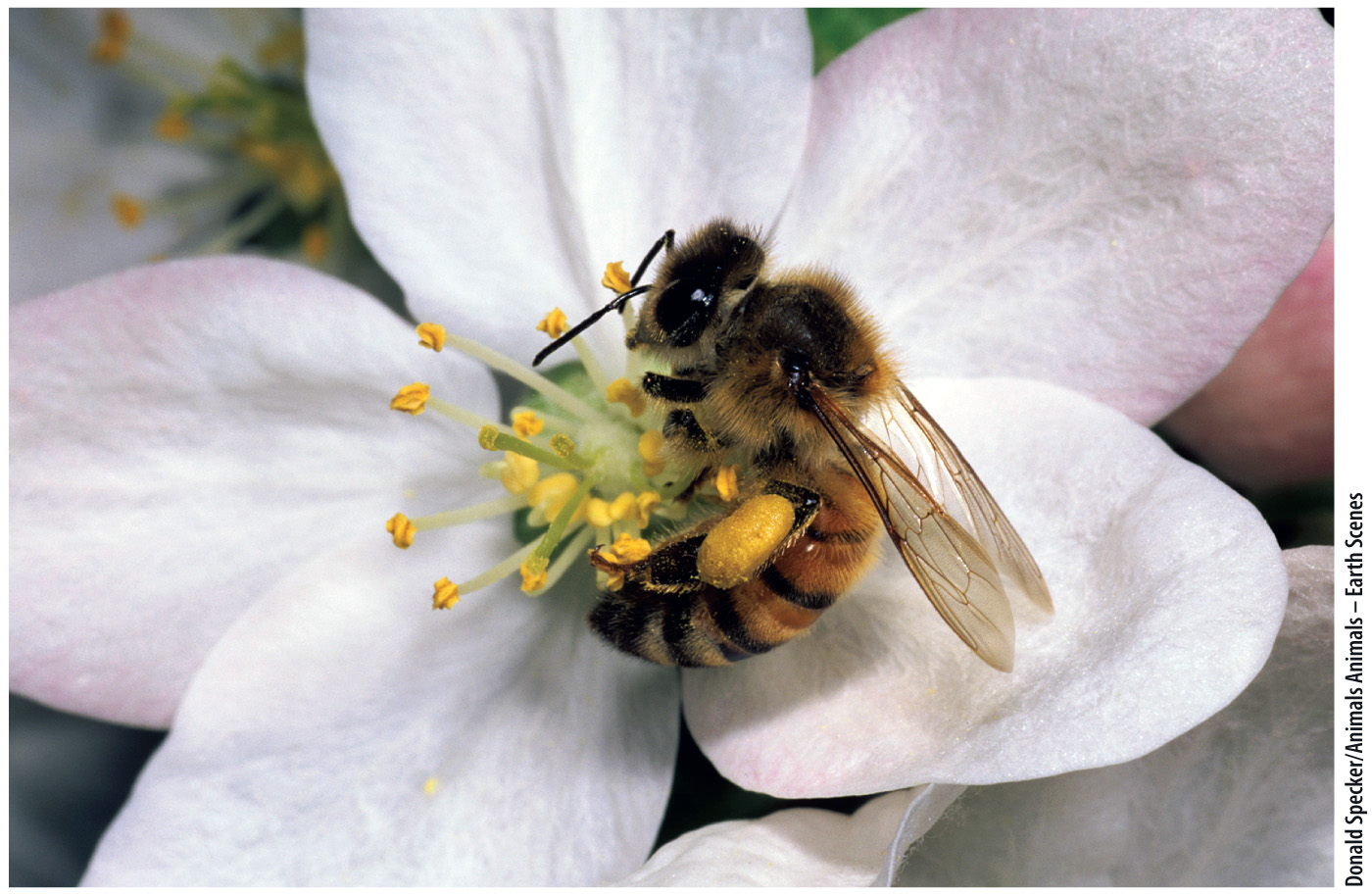Basic features of anatomy, physiology, and behavior shape ecological systems.
Apple trees, we noted, reproduce sexually. How is this accomplished given that the trees have no moving parts? The answer is that bees carry pollen from one flower to the next, enabling sperm carried within the pollen grain to fuse with an egg cell protected within the flower (Fig. 1.19). The process is much like the one discussed at the beginning of the chapter in which hummingbirds carry pollen from flower to flower. In both examples, the plants complete their life cycles by exploiting close interactions with animal species. Birds and bees visit flowers, attracted, as we are, by their color and odor. Neither visits flowers with the intent to pollinate; they come in expectation of a meal. As the birds and bees nestle into flowers to collect nutritious nectar, pollen rubs off on their bodies.

But if animals help apples to fertilize their eggs, how do apple trees disperse from one site to another? Again, the plants rely on animals—
The many ways that organisms interact in nature reflect their basic functional requirements. If a plant is to grow and reproduce, for example, it must have access to light, carbon dioxide, water, and basic nutrients. All plants have these requirements, so one plant’s success in gathering nutrients may mean that fewer nutrients are available for its neighbor—

In short, ecological relationships reflect the biomechanical, physiological, and behavioral traits of organisms in nature. Form and function, in turn, arise from molecular processes within cells, governed by the expression of genes.